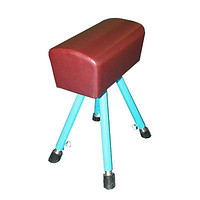- Street lighting tasks
- Street lighting control methods
- Manual control
- Remote control
- Automatic control
- Automatic control system
- Automatic control system features
- Independent lighting control
- What we need to light
- What we need for this
- How to connect
- We collect schemes

Today this beauty is controlled by automatics.
Lanterns on the street and the street lighting control cabinet saw everything. Everyone knows that this equipment is designed to move comfortably and safely through the streets. But how the management system works is not for everyone.

Walking along such streets is not only scary, but also dangerous.
We will tell in detail about the system and the equipment that is used in it. In addition, we will give practical advice on how to implement the management of street lighting at your company or site near the house, gardening cooperative, or the company where you work.
To help the video, which reveals the capabilities of such systems:
Street lighting tasks

When the sun goes below the horizon, street lighting takes its place
It would have been easier to give up regulation altogether, just to leave street lights on all the time, but this is not profitable. Therefore, mount the lighting control system.
They have several tasks:
- At the end of the daylight, turn on the lights, turn off at dawn.
- Perform the same operations with the deterioration of the natural illumination of the streets due to various natural factors.

With such a fog, street lights can help a little too.
Fifty years ago, only these functions were performed, nobody cared about energy saving, and the solution of more complex tasks was difficult and costly to implement. Modern lighting control systems are more functional, they additionally know a lot.

Energy saving is one of the main tasks of electronic control systems for street lighting
- To disconnect all lighting equipment or part of it in order to save electricity.
- Determine the health of the system.
- Monitor power consumption.
- Remotely transmit system data in the street lighting control panel.
Street lighting control methods
There are three methods for controlling lighting. Tell you more about them.
Manual control
Switching on the lights is done manually, each lamp or their group is controlled by the operator on the spot.
In fact, this is the oldest way. When the lamplighter passed through the street and lit each oil or gas lamp, and then extinguished them - this was the first and obvious implementation of the method. In the courtyard of our house we also control the lighting more often by hand (about automation below).

The lamplighter realizes the manual control of a gas lamp (by the way, a snapshot is a modern employee of the Brest Highway)
For today in municipal services manual control is used only in emergency situations, or during repair work.
Remote control

One of the first remote control devices for street lighting
When all power supply in a village or its part was carried out from a separate power plant, the lamplighter's functions were transferred to their personnel. The responsible person, having determined that it was dark or dawn enough on the street, turned on or off the switch that supplies voltage to the street lighting networks.
Automatic control

The shield of the simplest automation of street lighting

Transformer substation
In this case, individual sections of street lighting, depending on the state of the sensors and the algorithm, are turned on and off by themselves. The transition to an automatic system is connected with the fact that consumers began to apply voltage using standard transformer substations that convert high voltage to standard voltage.
This created two factors that predetermined the transition to automation:
- Installing (except for some cases) separate substations only for street lighting is unprofitable. Transformers are now transforming the voltage for all energy consumers in the territory.
- In addition, in order to centrally control the switching on and off of street lamps, one would have to pull a separate line to each individual substation that feeds the lighting , which would further increase costs.
Therefore, in the 50s - 60s, an automatic lighting control system was introduced. She worked on the simplest principle available at the time. At each substation installed automatic, acting on the light sensors. It became dark - they energized the lights, it became light - they turned it off.
However, the sensors failed in some cases:
- with improper calibration, they did not work clearly;
- due to the illumination of the headlights or even a full moon, the lights could go out at night;
- when the sensor was closed with snow, ice, mud or dust, the light turned on during the day;
- in the end, the sensor could fail.

Rare light sensor
Then they found another significant disadvantage, which manifested itself at a time when they began to think about saving - why at night, if there is no movement of people and transport, it is in vain to burn electricity. Therefore, light sensors began to block with a time relay. The timer turned off either all the lights completely or part of them in the courtyards and sparsely populated streets in the interval, for example, from one to four in the morning.
Later, so-called astronomical relays appeared (in the photo below). In these, the software calculates the time of dusk and dawn at a given place according to the entered coordinates, and, based on the calculation, gives signals for switching. The relay also implements the function of switching off and on at the specified hours.

Astronomical relay
Council If you use an astronomical relay, then the easiest way is to find the coordinates of your place not using ordinary maps, but using a navigator. It will tie your location to within a split second.
Light sensors left only to control the unexpected reduction of natural light, for example due to fog. An astronomical timer-based system seems to be ideal (most of the street lighting systems in small communities operate on their basis).
But she still has cons:
- In order to reprogram the system for a different response time (for example, during holidays), it is necessary to bypass all substations. It takes a lot of time (I know from my own experience).
- The presence of a person is also required to identify faults, readings from electricity metering devices.
Therefore, today they are increasingly using automated control systems based on modern digital technologies. They combine automatic and manual control. Consider the implementation of one of the typical systems.
Automatic control system

Structural diagram of one of the options for automating the control of street lighting
Hardware it consists of two levels:
- The top one is the dispatching control panel of street lighting, located at the enterprise responsible for the lighting networks (Gorsvet or public utilities). Controlled by the attendant or dispatcher. All information from the lower level flows to it, and the parameters or programs of its work are changed.

Dispatch control center for street lighting
- Bottom - the street lighting control panel is located in the lighting network sections. Shields commute the work of lighting devices and control their condition without the presence of workers.

Shield lighting control system ASUNO
The relationship between the upper and lower levels can be done in several ways. As a rule, equipment supplied by manufacturers supports all functions. Therefore, the company chooses the option that is most beneficial for a particular situation. Sometimes the system simultaneously uses multiple channels.
Therefore, we list all the ways of switching:
- Modem channel - through the lines of a regular telephone network. One of the cheapest ways. The only drawback is that the telephone network is not always nearby, and laying a separate line can be costly. Also for the telephone connection you need to make at least a small, but still a fee.
- GSM channel - using a cellular network. The equipment is inexpensive, you can connect quickly and almost anywhere. The disadvantage is a significant payment for using the network.
- LAN lines - the street lighting control unit and the controller equipment are connected by a twisted pair. This channel does not require payment for communication to third-party organizations, but requires laying lines to each cabinet. It is beneficial only with a small remoteness of the equipment of the upper and lower levels.
- Radio - as is clear with the help of radio. Equipment is more expensive than in other cases, but payment for the channel is not required. Minus one - poor noise immunity.
Automatic control system features
We list the main features of the system, and note that all operations and data transfer are carried out in real time and with the ability to work not with each control panel separately but also to group them.
Management functions:
- on and off each light source on command;
- programming the inclusion of lighting in time or on the status of sensors (light and others), it is possible to introduce hourly, calendar and seasonal work schedule;
- phase switching on the power lines of lighting devices, including software - by time, or depending on the power parameters at the input to the cabinet;
- forced reboot of the microprocessor system of the control cabinet.
Control functions:
- control of the state of the lighting connection lines (whether or not there is voltage, its parameters, current, presence of a short circuit, phase distortion, cosine phi);
- control of the state of input lines (whether or not the voltage is its parameters, current, phase imbalance, cosine phi);
- control of the state of contactors and circuit breakers at the outputs (on / off);
- control of electricity metering device (readings, peaks, tariffs);
- control of unauthorized access to the cabinet (when opened without permission, or hacking, information is sent to the dispatcher);
- state of communication lines (signal level, etc.);
- system fault diagnosis;
- control of fires, sensors signal a sharp rise in temperature.
The street lighting control system almost always has a built-in power supply. When the power supply is disconnected, it stays in contact for at least an hour, and reports changes in parameters.
It is also worth noting that data storage is almost always duplicated. Information about the situation is recorded and stored not only in the control room equipment, but also in the equipment of cabinets (control panels in the field). If there was no connection, then you can restore the course of events through the memory of the control panel (as mentioned above, it is non-volatile).
Independent lighting control
If we talk about a small area, for example, such as a plot near a house or a production site of small size (no more than 100 x 100 meters), then there is no need for complex street lighting control systems.
Remote control is also not necessary (even with a smartphone). While you turn on the desired application, you can go up and turn on the mechanical switch. On such a territory rarely installed more than a dozen lamps. The exception is when the control of street lamps is interconnected with the house or the security system.
Therefore, we will analyze how to arrange with your own hands a street lighting control system for a small area. She, as practice shows, can significantly reduce the cost of energy supply.
What we need to light
The most common division into the following groups of lamps:
- Lamps that burn all the dark time of the day (it all depends on the desires of the owners) usually have them in front of the main entrance.
- Roads within the territory should preferably be lit only when people or vehicles appear (see Garden lighting and do-it-yourself lanes ). This rule applies to areas where the appearance of uninvited guests (for the purpose of protection).
- Facade lighting , decorative lighting or festive illumination - it should be lit only in the evening.
- Playground in front of the entrance gate and garage. It can be illuminated only at the approach of technology, not people.
What we need for this
In addition to wires and fittings, you will need to purchase some more details. Everything is not expensive and not scarce, we give the approximate prices for them.
- Time relay - price from 300 rubles.

Time relay
- Astronomical relay - from 500 rubles.
- Light relay (twilight sensor) - from 500 rubles.

Light (twilight) relay with remote sensor
- Capacitive relay (presence or proximity sensor) - from 500 rubles.

Capacitive relay
I note that these are Russian prices, everything can be purchased and cheaper on the Internet (not taking into account the quality).
How to connect
All these parts (of modern design) are powered by a standard 220 volt network and can switch a decent load. That is, intermediate relays and contactors, step-down transformers are not needed, you just have to think about overload protection.
The wiring diagram is almost always indicated on the case, including the leads for signaling the lock / unlock. Additionally, the assignment of terminals prescribes instructions. Even with minimal (but confident knowledge of electrical engineering) problems will not arise.
We collect schemes
We will tell you what and how to apply for each illuminated object (territory):
- Before the entrance - just connect through an astronomical relay or lighting relay. Failures due to various circumstances are not critical, which, incidentally, is true for all other cases.
- Ways to move within the territory - the task is more difficult. We solve it this way: next to all the entrances and exits we install presence sensors, they give a signal to the time relay, which should turn on the lighting, for the interval of which there will be enough for the road. In order for the system not to be turned on during the day, we envisage its blocking by a light sensor or an astronomical relay.
- Illumination and illumination - through an astronomical relay, turn on after sunset, extinguish when everyone is asleep. If we are talking only about lighting for the holidays, you can use a regular timer (for a few days the sunset time will not change much).
- Entrance for the car - if you have an automatic gate, then the controller that controls them most often has an exit to control the lighting. If not - the best way to use the light sensor.
But you need to do so that he responded only to the headlights of the approaching car. To do this - attach the hood to the peephole (tube of small length and suitable diameter), it will exclude extraneous illumination.
We install the sensor not on the dashboard, but in the place where it will fall under the range of your headlights at the entrance. Additionally, you can block the inclusion of lighting in the afternoon using a time relay.
That's all that we wanted to talk about what a street lighting control system is. We will be glad if our article helped you. Live safe, but do not overpay for electricity.




